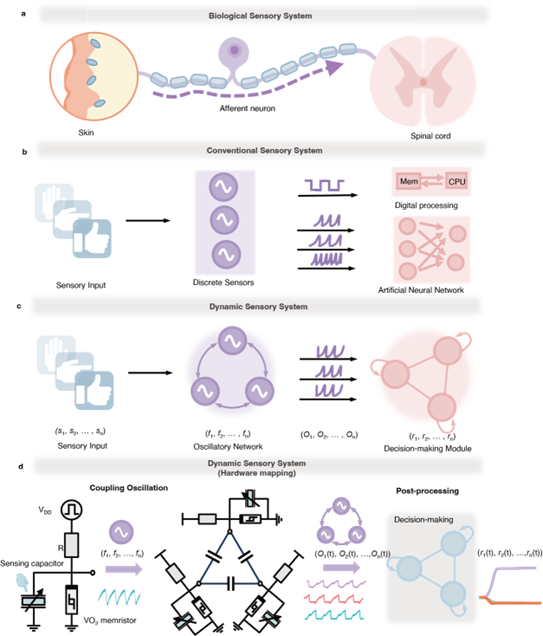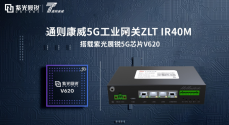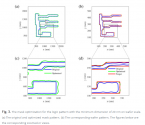You are using an out of date browser. It may not display this or other websites correctly.
You should upgrade or use an alternative browser.
You should upgrade or use an alternative browser.
Chinese semiconductor thread II
- Thread starter vincent
- Start date
Huawei Cloud's KC2 instance. Huawei release these instances for beta test a few months ago.Geekbench 6 score found for a single core benchmark of Hisilicon v120
Taishan V120 Performance in Geekbench 6
Processor Single-Core Score
Taishan V120 CPU 1,527
Epyc 7413 1,538
Xeon E-2136 1,553
Epyc 9554 1,957
Xeon w9-3495X 2,087
The CPU itself has 64C128T.
Neuromorphic photonic computing.
"Extensive evaluations on free-space and on-chip architectures confirm that for the first time, L2ONN avoided the catastrophic forgetting issue of photonic computing, owning versatile skills on challenging tens-of-tasks (vision classification, voice recognition, medical diagnosis, etc.) with a single model. Particularly, L2ONN achieves more than an order of magnitude higher efficiency than the representative electronic artificial neural networks, and 14× larger capacity than existing optical neural networks while maintaining competitive performance on each individual task. The proposed photonic neuromorphic architecture points out a new form of lifelong learning scheme, permitting terminal/edge AI systems with light-speed efficiency and unprecedented scalability."
"Extensive evaluations on free-space and on-chip architectures confirm that for the first time, L2ONN avoided the catastrophic forgetting issue of photonic computing, owning versatile skills on challenging tens-of-tasks (vision classification, voice recognition, medical diagnosis, etc.) with a single model. Particularly, L2ONN achieves more than an order of magnitude higher efficiency than the representative electronic artificial neural networks, and 14× larger capacity than existing optical neural networks while maintaining competitive performance on each individual task. The proposed photonic neuromorphic architecture points out a new form of lifelong learning scheme, permitting terminal/edge AI systems with light-speed efficiency and unprecedented scalability."
Last edited:
this actually confirms that source from earlier this thread (that I posted) which said Kunpeng 930 is already in use in Huawei Cloud.Geekbench 6 score found for a single core benchmark of Hisilicon v120
Taishan V120 Performance in Geekbench 6
Processor Single-Core Score
Taishan V120 CPU 1,527
Epyc 7413 1,538
Xeon E-2136 1,553
Epyc 9554 1,957
Xeon w9-3495X 2,087
I believe that ARM CPUs normally have more core than x86 CPUs. So single core performance are normally lower
Chinese semiconductor thread II
Zhenbao Technology, a supplier of core components for pan-semiconductor equipment, starts listing guidance On February 12, the China Securities Regulatory Commission recently disclosed a report on the initial public offering of stocks and listing guidance filing report of Chongqing Zhenbao...
www.sinodefenceforum.com
Suzhou Zhicheng Semiconductor Headquarters Project Opens Today
The total investment in the Suzhou Zhicheng Semiconductor Headquarters project is 500 million yuan. The company is committed to the research, development, design, and production of process equipment for the semiconductor industry, and its market share ranks among the top in the third-generation semiconductor manufacturing segment. Customers include integrated circuits, LED optoelectronics, compound semiconductor industries and scientific research institutes, etc. After the project is completed and reaches production capacity, it is expected to achieve an annual output value of over 1.5 billion yuan.
Fuchuang Precision: Precision parts manufacturing technology leads core products to break foreign monopoly
A leading company in semiconductor parts and components with world-leading manufacturing technology: Fuchuang Precision is a leading company in domestic semiconductor equipment parts. The company focuses on precision manufacturing technology of metal material parts. Its main products are divided into process parts, structural parts, module products, There are four major categories of gas pipelines, which are used in semiconductor photolithography machines, etching machines, thin film deposition equipment, etc. The company is currently able to achieve mass production of semiconductor components using the 7nm process, and its process completeness is at the world's leading level. In 2022, the company achieved revenue of 1.544 billion yuan, a year-on-year increase of 83.18%, net profit attributable to the parent company was 246 million yuan, a year-on-year increase of 94.19%, and a gross profit margin of 32.68%. In 23Q1-Q3, the company's revenue was 1.390 billion yuan, a year-on-year increase of 37.28%, maintaining a rapid growth trend.
Revenue scale is expanding rapidly, and production capacity needs to be further released: The company's revenue scale is expanding rapidly, and there are sufficient orders on hand. It continues to invest in production capacity, and the production capacity utilization rate of process and structural parts is above 90%. The company plans to build new factories in Shenyang, Nantong, and Beijing in the future. With the release of future production capacity and the prominent scale effect, the company's profitability is expected to remain at a high level.
The three core technologies are internationally leading, and the main products break the monopoly of the United States and Japan: the company's core technologies mainly include precision machinery manufacturing, special surface treatment processes and welding processes. These three core technologies are independently developed by the company and are protected by dozens of patents. They are widely used in the company's process components, structural components and gas pipeline products, and are at the leading level in the world. Relying on the advanced 7nm process and the world's leading process level, the company's main products have gradually broken the monopoly of Japanese and American companies and gained recognition from foreign customers.
Peking University School of Integrated Circuits makes progress in memristor coupled oscillation dynamics computing system
Traditional circuit components have area and efficiency bottlenecks when processing external physical signals, while emerging memristive devices have rich intrinsic nonlinear dynamics. The underlying physical dynamics of such devices bring new computing resources and are the basis for generating The key to bottom-up intelligence emergence. Among them, the Mott memristor with spatiotemporal coupling characteristics and its coupled oscillation dynamics can achieve complex and controllable group dynamics behavior, thereby enabling the processing of complex sensing signals. Such a new computing system is expected to minimize redundant data movement between sensors and processing units and meet the speed, area and energy efficiency needs of advanced sensing systems for technologies such as wearable electronics and virtual reality.

In response to the key needs and challenges in the field, the research group of Professor Yang Yuchao from the School of Integrated Circuits at Peking University/Integrated Circuit Advanced Innovation Center has implemented a capacitively coupled VO 2 phase change oscillation dynamics calculation system in hardware for the first time. Sensing data follows a hierarchical processing principle, including sensing pre-processing (encoding, filtering and feature enhancement) to post-processing (identification, classification and localization). For the preprocessing module, the team first prepared a highly uniform vanadium oxide memristor device, and based on this, built a VO2 oscillator with sensing function . Capacitive circuits are further used to couple multiple VO 2 oscillators to construct synchronized dynamics, in which information is encoded in the synchronized phase difference. This coupled VO oscillator network is used to build a continuous-time dynamic system for sensing preprocessing with extremely low energy delay product. In the post-processing module, the team designed a decision-making network module with high selection specificity based on the characteristics of the continuous-time output of the coupled oscillator, thereby building a complete dynamic sensing and processing computing system. Hardware experimental results prove that the coupling network performs well in sensory processing tasks such as touch recognition and gesture recognition, and has significant advantages over traditional hardware implementations in terms of device number and energy delay product.
UNISOC and Tongze Kangwei released two new products equipped with V620
Unisoc and Tongze Kangwei jointly released two new products equipped with Unisoc’s V620 chip platform: 5G CPEZTL S200 and 5G industrial gateway ZLT IR40M.
General Conway 5G C PE ZLT S200 is an indoor Wi-Fi6 5G CPE that supports 4/5G cellular communications. 5G supports NR CA and can be expanded to 200M bandwidth. ZLT S200 supports dual-band Wi-Fi, supports 802.11a/b/g/n/ac/ax protocols, supports a maximum bandwidth of 160MHz, and can implement AX3000 wireless LAN deployment. ZLT S200 is equipped with one 2.5Gbps network port and three 1Gbps wired network ports, which can build a high-speed wired LAN. ZLT S200 is powered by DC or Type-C interface. At the same time, the built-in 10000mAh battery can support the device's battery life when powered off.
ZLT S200 supports NAT, DHCP, firewall and VPN functions, and is suitable for various scenarios such as enterprises, homes, and industry applications with high network requirements, providing users with reliable and high-speed 5G wireless broadband network access.

General Conway 5G Industrial Gateway Z LT IR40M is a universal, highly adaptable, multi-scenario application 4-port industrial router, equipped with UNISOC V620 5G chip, with standard configuration of 1WAN/LAN+3LAN, RS485, DI/DO , WiFi6 and GNSS are optional. It supports dual SIM cards and dual standby, supports NR (SA & NSA), LTE, and converts cellular network data into Gigabit wired network port data, effectively adapting to typical industrial application scenarios.

ZLT IR40M has high-precision positioning, supports 5G TSN, 5G LAN, slicing, and high-precision timing; supports NRDL 2CC and UL 2CC, as well as flexible NR 2CC combinations. NR peak rate (SA networking) is as high as: DL 4.67Gbps, UL 1.875Gbps; supports 3Tx super uplink, supports 3GPP R16 uplink Tx Switching and other advantageous features.
CITIC Securities: The United States has increased sanctions on Chinese semiconductors and attaches great importance to localized investment opportunities
The United States has further restricted SMIC's purchase of American equipment parts and materials. However, we expect that the banned products will be able to find alternative suppliers. The overall impact of this US ban will be limited.
Reuters reported that the United States has further restricted SMIC's purchase of American equipment components and materials. However, we expect that the banned products will be able to find alternative suppliers. The overall impact of this US ban will be limited. In addition, the Netherlands reiterated its export restrictions on mid-to-high-end lithography machines to mainland China, but the content of the restrictions remains consistent with the ban implemented on January 1, 2024, in line with previous expectations. Taking into account the accelerated expansion of domestic leading wafer fabs and the rapid increase in demand for domestic substitution, domestic equipment, parts, and material manufacturers are expected to continue to benefit.
We believe that the United States' current efforts to increase restrictions on China's semiconductor industry are gradually weakening, and the country has already prepared for this in advance, so the impact on the semiconductor industry is diminishing. It is recommended to continue to pay attention to the new product layout of domestic equipment, parts and materials companies in the "stuck neck" field and the increase in orders brought by advanced production capacity. It is expected that orders will increase rapidly in 2024. It is recommended to pay attention to domestic head equipment parts companies and equipment companies. At the same time, considering the demand for domestic substitution of high-end lithography machines, it is recommended to pay attention to domestic lithography machine industry chain companies.
Linearized EUV mask optimization based on the adjoint method
Abstract
Mask optimization, a compensation method for the thick mask effect and the optical proximity effect in projection lithography, is essential for advanced EUV-enabled production nodes. However, owing to high computation costs and the absence of gradient calculations, it is challenging to optimize EUV masks under rigorous consideration of the thick mask effect. In this work, a linearized EUV mask optimization method based on the adjoint method is proposed to provide fast and effective optimizations. The adjoint method is introduced to calculate the gradient of the EUV mask model. Additionally, a linearized gradient is proposed to quickly compensate for wafer pattern distortion caused by the prominent thick mask effect. Two examples of the EUV mask optimization implemented with a two-step strategy were provided, from which it was observed that the linearized gradient can improve the efficiency by about 40% in the coarse optimization step. The proposed method is promising for accurate full-chip EUV mask optimization.


